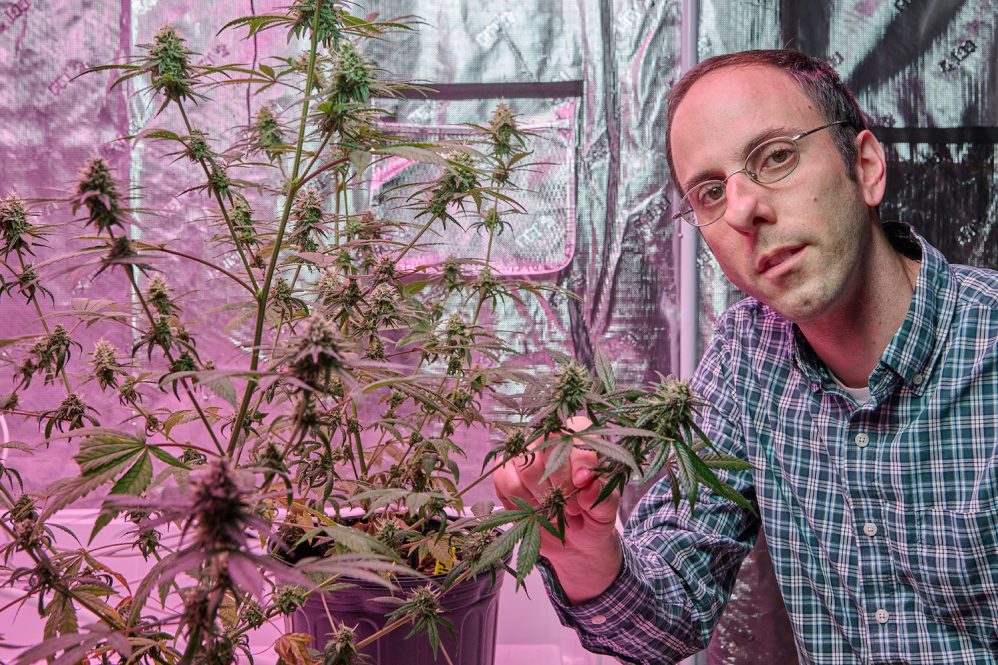The Instructor:
A squash sprouting in a compost pile started Matt DeBacco ’07 (CAHNR), ’11 MS, ’14 MS on a life of horticulture. Inspired by that compost volunteer, and never one to do anything by halves, he started growing giant pumpkins in high school. Over the subsequent 23 years he’s analyzed the plants’ genetics, presented at giant pumpkin research conferences, and broken the state record for biggest cucurbit (a type of gourd) twice. His personal-best pumpkin weighed in at 1,885.5 pounds.
“Anything I do, I tend to take all the way,” he says.
DeBacco double majored in pathobiology and horticulture and minored in molecular and cellular biology. He pursued a master’s in agronomy with a focus on suppressing powdery mildew on pumpkins, and after a short-notice stint at teaching (someone retired unexpectedly and he was pulled in from the research lab) he decided to take classes in education. He earned another master’s from UConn — this time in education — and then a Ph.D. from Ashford University (now The University of Arizona Global Campus), while teaching science at Rocky Hill High School, something he still does.
He also kept up his pathobiology research at UConn, developing expertise in powdery mildew, a family of fungi that covers plant leaves with a white, powdery film when the weather turns cool and wet. Cannabis plants grown in greenhouses are also susceptible to powdery mildew. One day a colleague called him in for a consult, and DeBacco made the leap from cucurbits to cannabis.
“The basics are the same, whether pumpkin or cannabis. Total weight wins.”
The Class:
This class is part hands-on horticulture, part business analysis, and part plant chemistry tutorial. Cannabis went from being an illegal plant that could get your real estate confiscated by the government to a lucrative business opportunity in a few short years. DeBacco wants every student to come away understanding what it takes to have a profitable grow-out, whether field-grown hemp or hothouse marijuana.
Most students come from CAHNR, but a significant minority are in other majors, most commonly business or pharmacy. Because they have different goals for taking the class, it has to cover a lot of ground. DeBacco does it in five units. He begins by examining the cannabis plant itself: its anatomy, species, naming system, the difference between hemp and marijuana, the different pharmaceutical chemicals cannabis can contain, and the legality of it on the federal and state levels. Cannabis genetics are discussed, as well as the difference between genotype (genes possessed by a plant), chemotype (what chemicals it makes), and phenotype (how it looks and grows). The second unit covers breeding cannabis and growing and propagating plants from seed or clone, and the third unit focuses on plant hormones, indoor versus outdoor growing, and producing the all-important flowers. Unit four focuses on drying and processing the raw plant material, and unit five on potential products and how to extract them, as well as various jobs in the industry, from growers and lab workers to salespeople and legal advisors.



